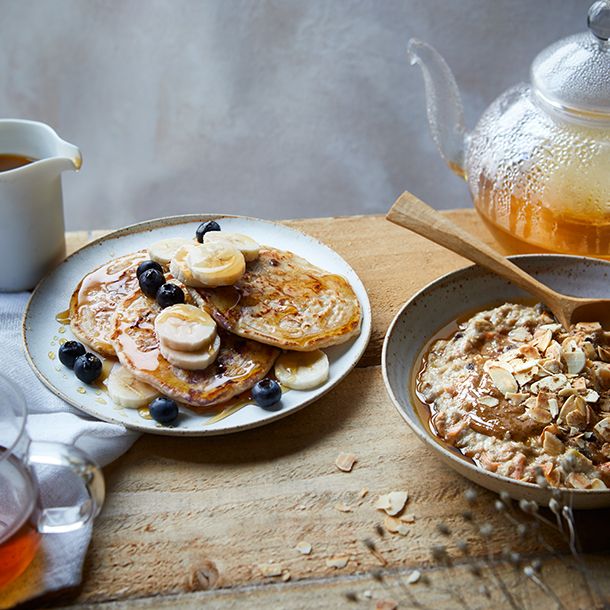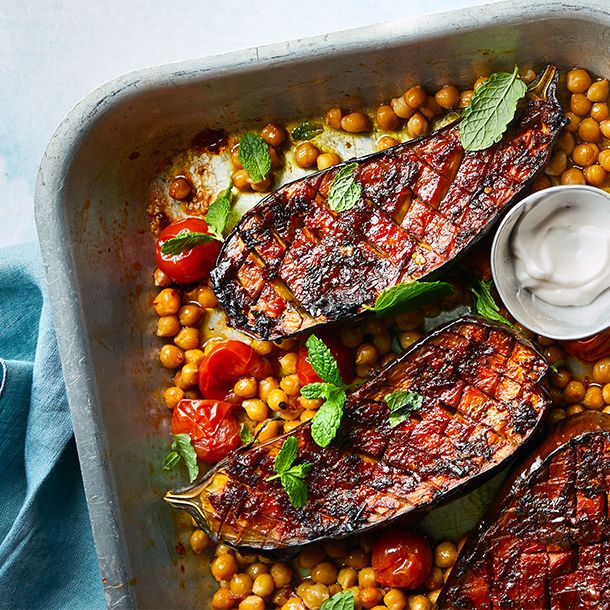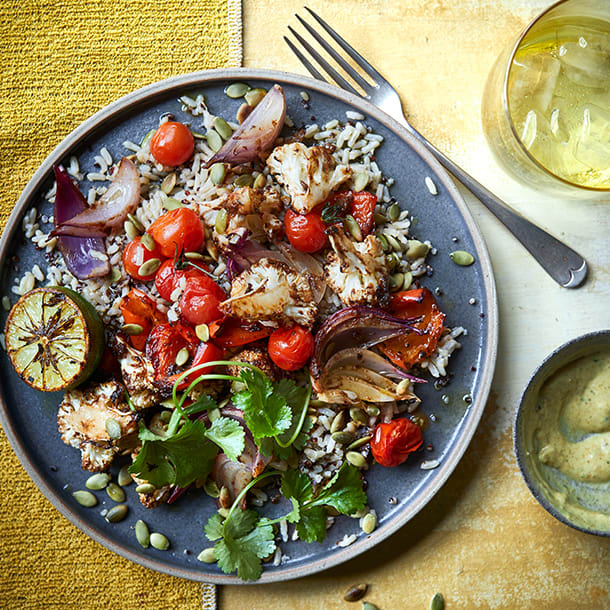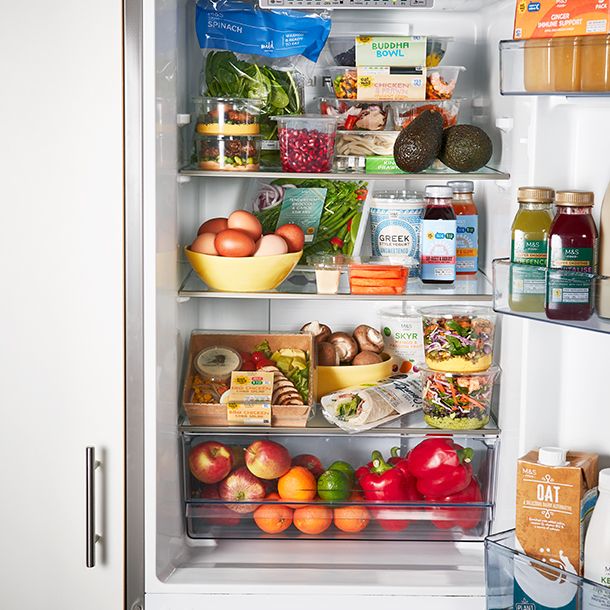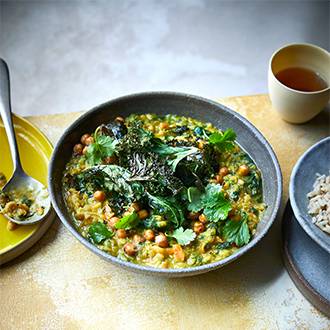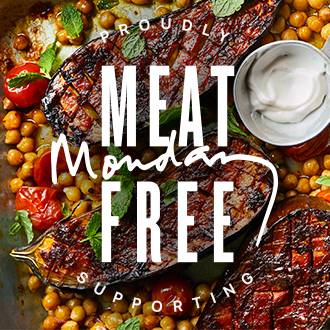

SPARKING CHANGE: THE CHALLENGE
Are you ready to make a change?
Sparking Change: The Challenge will help you to spark a change in your kitchen, making the food you eat greener, healthier and more affordable. We want all M&S customers to be able to create tasty, nutritious meals incorporating plant-based foods. Plus, we’ll help you to bring food waste right down by making sure you cook and eat everything you buy. These are two of the simplest ways to do your bit for the environment.
Anyone can take part in the challenge – simply scroll further down the page for tips, inspiration and recipes.
Plant-powered nutrition
Eating more protein from plants is a great way for you to enjoy healthy and tasty food while helping to reduce climate change.
Switching to a more plant-based diet doesn’t need to be difficult. Meat and dairy are rich sources of important nutrients, but with a little planning, a diet with more vegetarian or vegan options can also include all the nutrients you need. Pulses, beans, grains, peas, mushrooms, broccoli, kale, sweetcorn, nuts and seeds are all great sources of plant-based protein – protein is essential for growth and repair of the body and maintenance of good health, and it provides us with energy, too. Plant Kitchen milk alternatives are another a great addition your diet – they’re fortified with vitamins and minerals such as vitamin B12, vitamin D, calcium and iodine.
Simple plant-based swaps
Changing our eating habits might seem challenging, but there are small changes you can make.
Five simple ways to power up on plants:
• Make over your morning cuppa – try a milk alternative from the Plant Kitchen range.
• No need to go teetotal – try Meat Free Monday, or just swap in a plant-based alternative every so often.
• Veg out – try adding green lentils to a bolognese or tofu to your Thai curry, instead of or as well as meat.
• Get inspired – look out for delicious plant-based recipes. Try cuisines that are well known for vegetarian cooking, such as Indian.
Plant-powered flavour
Eating more vegetables, beans, pulses, fruit, nuts, seeds and whole grains will introduce you to new flavours and textures. If you love meat but want to eat less of it, seek out vegetables such as aubergines and mushrooms. They mimic the texture of meat, and seasoning them with soy sauce, smoked paprika or miso can give that savoury hit.
Our Plant Kitchen range means you’ll never have to compromise on taste. Expertly developed by our chefs, every product is tastes just as good or even better than its meat or dairy counterpart.
LESS WASTE, MORE TASTE
Plan like a pro
Food waste is a national and global environmental challenge. UK households waste 6.6 million tonnes of food every year. This has a big environmental impact, and it’s also a huge waste of money.
Meal planning is one of the best ways you can reduce your food waste. You can make it fun by getting the whole family involved – try writing some of your favourite meals on a piece of paper and pick them from a hat or write them on a chalkboard. Remember to save some days in your plan for eating out, having a fridge forage or enjoying leftovers. Haven’t written a meal plan before? No problem! Download our handy meal planner, which will also help you use up what you have in already and make shopping for food a doddle.
Store it right
The food we buy but don’t end up eating contributes to climate change. The greenhouse gases associated with food waste in the UK are the equivalent of those produced by 10 million cars [source].
There are lots of ways to reduce food waste, and looking after the food we buy is one of the big ones. Storing food in the right place can make it last longer and taste better. Not sure what to stpore where? Here’s a quick guide:
• Keep cool, dark and dry – bread, onions, potatoes, mushrooms (keep onions separate from other food)
• Keep in the fridge – vegetables, fruit, eggs, leftover meals, dairy, meat, gravy
• Use your freezer – bread, milk (as long as the carton hasn’t been opened), harder cheeses like cheddar, some herbs, fresh pasta
Love your leftovers
Producing food has a big impact on the environment, as it requires a huge amount of water, energy and land. An area almost the size of Wales is needed to produce all the food and drink we currently waste in the UK [source]. Turning leftover meals into a new dish or a tasty snack is one of the best ways to help tackle food waste.
Make sure to cool leftovers as quickly as possible, then store them in the fridge or freezer (if saving for a later date). Eat them within two days if stored in the fridge (one day for rice) and reheat until piping hot.
If eating the same meal two days in a row isn’t for you, try one of our tips to reimagine your leftover food into a brand-new meal:
• Leftover meat and vegetables from a Sunday roast? Create a bubble and squeak brunch or add them to a curry.
• Cooked too much rice? Fry it with some leftover vegetables, some soy sauce and an egg or two, heat thoroughly and you’ve got egg fried rice.
• Overdone it on the pasta? You can’t go far wrong with a delicious mac and cheese.
Check out our recipes to give you lots of ideas to use your leftover food, such as a panzanella salad and a chocolate and banana cake.


